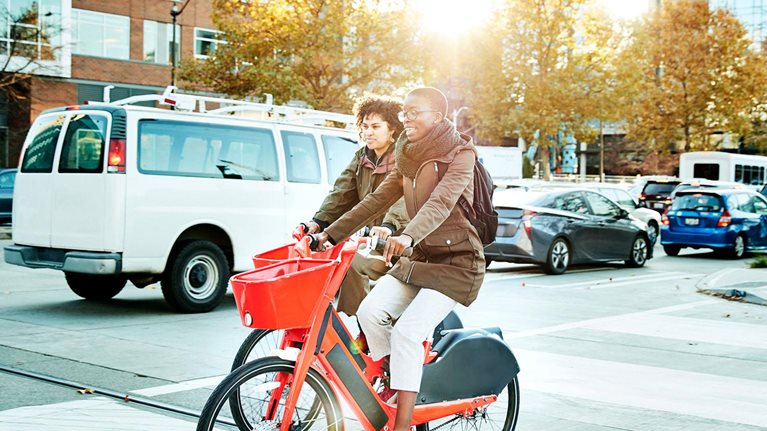
Introduction to Ride-Sharing
Ride-sharing, particularly embodied by services like Uber and Lyft, has dramatically altered the landscape of urban transportation. Emerging around 2010, these platforms transformed traditional transportation models by leveraging mobile technology to connect riders with drivers. This innovation disrupted established taxi services, providing a more convenient and often cost-effective alternative for urban mobility. The convenience of ordering a ride via a smartphone app has caught on globally, reshaping commuter patterns and urban traffic dynamics.
Market Growth and Economic Impact
The ride-sharing market has seen tremendous growth since its inception. For instance, in 2019, consumers utilized ride-hailing services for more than 15 billion trips, generating revenues of approximately $130 billion, with projections suggesting this could escalate to between $450 billion and $860 billion by 2030[1]. Additionally, the rise of shared micromobility—such as electric scooters and bicycles—has complemented ride-sharing, leading to a compound annual growth rate (CAGR) exceeding 200% in the micromobility sector[1]. The shared-mobility market overall could expand rapidly, potentially reaching $1 trillion by 2030, shaped by varied factors like consumer adoption and technological advances[1][2].
Changes in Consumer Behavior
A significant aspect of ride-sharing's impact is the shift in consumer behavior towards shared mobility. More than 60% of individuals expressed willingness to utilize shared rides if it could save on costs, indicating an evolving mindset towards collective transportation options[6]. This shift reflects a growing demand for not just convenience but also affordability, specifically among younger generations who prioritize cost-effective travel solutions.
Urban Traffic Congestion and Mobility Patterns

Contrary to the expectation that ride-sharing would alleviate urban congestion, studies have shown mixed results. The introduction of Transportation Network Companies (TNCs) has been linked to increased road congestion and a decline in public transport ridership. Data indicates that TNCs have contributed to a 0.9% rise in congestion levels and an 8.9% decrease in public transport usage[5]. This trend highlights a complex interplay where ride-sharing services can entice users away from public transit while simultaneously raising traffic volumes.
In cities like New York, ride-sharing services have mirrored this trend, with increasing rates of ride-hailing correlating with decreased vehicle ownership. Statistically, the percentage of households without a car in Manhattan rose significantly, showcasing a diminished reliance on private vehicle ownership thanks to the availability of on-demand ride services[2][4].
Environmental Considerations

From an environmental perspective, ride-sharing holds potential for reducing carbon footprints, particularly with initiatives aimed at integrating electric vehicles into fleets. Uber's commitment to transitioning to an electric fleet by 2025 in London exemplifies the industry's shift towards more sustainable practices[2]. The considerable emissions reductions achievable through shared services stand in contrast to the increased traffic congestion attributed to TNCs, which raise critical questions for urban planners about the long-term sustainability of current models[5].
Policy and Regulatory Challenges
Ride-sharing's rapid expansion has brought about numerous regulatory challenges. Local authorities grapple with the classification and regulation of TNCs, particularly concerning issues such as driver safety, insurance requirements, and fare structures. This debate has significant implications for the potential integration of ride-sharing services into existing public transit systems, as policymakers must seek a balance between fostering innovation and ensuring public safety[7].
Future of Shared Mobility
As the future unfolds, the role of autonomous vehicles in the ride-sharing landscape could redefine urban mobility once again. Robo-taxis and autonomous shuttles are anticipated to offer competitive pricing against traditional ride-hailing services as they eliminate driver costs[1][6]. The integration of autonomous vehicles could enhance the convenience and efficiency of ride-sharing, potentially leading to higher levels of consumer adoption and significant shifts in urban transport infrastructure.
Moreover, advancements in air mobility, such as flying taxis, signal another frontier for shared transportation, with major investments indicating an increasing focus on this innovative avenue[1]. However, the realization of these technologies will depend heavily on advancements in regulation and public acceptance, as well as the readiness of urban infrastructures to accommodate these new forms of transport.
Conclusion

The ride-sharing phenomenon represents a significant evolution in urban transport, reshaping how cities manage mobility, congestion, and environmental sustainability. While the benefits of convenience and reduced reliance on private vehicle ownership are notable, challenges such as increased congestion and regulatory hurdles complicate the overall picture. As the sector continues to evolve, the integration of shared and autonomous vehicles could offer new solutions to longstanding urban transportation issues, highlighting the delicate balance cities must strike between innovation, sustainability, and accessibility.
Get more accurate answers with Super Pandi, upload files, personalized discovery feed, save searches and contribute to the PandiPedia.
Let's look at alternatives:
- Modify the query.
- Start a new thread.
- Remove sources (if manually added).